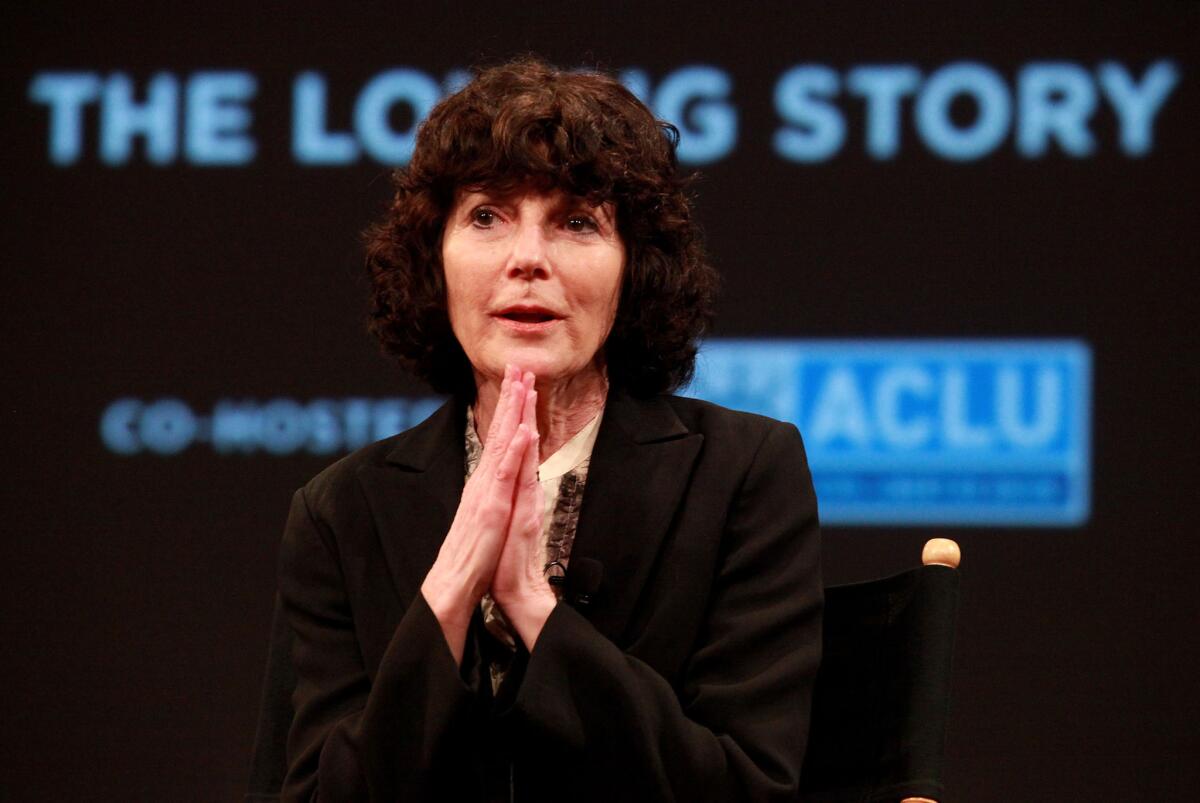‘Afternoon of a Faun’ recalls inspirational dancer Tanaquil Le Clercq

- Share via
Considered one of the most influential and exquisite ballet dancers of the 20th century, Tanaquil Le Clercq was the muse of landmark choreographers George Balanchine and Jerome Robbins.
Among the ballets Balanchine choreographed for her were “Symphony in C,” “La Valse” and “Western Symphony,” while Robbins created his seminal version of “Afternoon of a Faun” for her.
Both men loved her, she became Balanchine’s fourth and last wife in 1952. Her star continued to soar until it crashed to the ground four years later: The New York City Ballet had embarked on a European tour in 1956, and though precautions were made to protect the dancers against a polio epidemic by having them inoculated with the Salk vaccine, Le Clercq didn’t take the vaccination. She contracted polio while in Copenhagen.
REVIEW: ‘Afternoon of a Faun’ a graceful tale of ballet, loss
She never danced or walked again.
Le Clercq is the subject of Nancy Buirski’s new documentary, “Afternoon of a Faun: Tanaquil Le Clercq,” which features vintage clips of the ballerina in performance and interviews with those who knew her, including her frequent partner at the New York City Ballet, Jacques D’Amboise. The documentary also chronicles her life after contracting polio. Though she and Balanchine would divorce in 1969, Le Clercq found the strength to not only endure but live a full life. She died in 2001 at the age of 71.
Filmmaker Buirski recently discussed “Afternoon of a Faun” and the timeless mystery and beauty of Le Clercq, who was known to friends as Tanny.
I read that the 1948 romantic fantasy film “Portrait of Jennie” with Jennifer Jones and Joseph Cotten influenced your film. Is it because Claude Debussy’s beautiful composition is used in that movie?
The first time I saw Tanny she was dancing to “Afternoon of a Faun.” A tiny little piece of it showed up in a Jerome Robbins documentary, “Something to Dance About,” and explained how he was highly enchanted, shall we say, by her.
BEST MOVIES OF 2013: Turan | Sharkey | Olsen
That music has always haunted me since “Portrait of Jennie.” The score of “Portrait of Jennie” is really amazing. It interweaves “Faun,” “Arabesque No. 1” and “The Girl with the Flaxen Hair.” And it’s a story about an artist and a muse.
So here I am, kind of gob smacked, hearing this music and seeing it in that context of watching Tanny dance. As I moved forward on the film I kept thinking, I have to use “Afternoon of a Faun” as the central piece of music and all the rest [of the music from “Jennie”] because I am personally attached to that music and it’s the right sentiment.
Why didn’t Tanny get the polio vaccination ?
I don’t think we can hypothesize. I think she was a bit stubborn and she wanted to do things her way. I think she had heard that people could get ill [from the vaccine]. And according to Jacques, they were about to take a very long plane trip. She didn’t want to be miserable on the plane.
How did she manage to find that inner-strength to endure after she contracted polio?
I think Tanny in some ways remains a mystery. One thing people say about the movie is that they feel personally connected to her. But I don’t think anyone totally understands what gave her the resilience and the kind of — I don’t know whether it’s stoicism or spiritual — acceptance. She went through a serious depression and then she suddenly came out of it. Somewhere in that nightmare she found the strength to go on.
PHOTOS: Behind the scenes of movies and TV
You can’t keep her your eyes off of Tanny watching those vintage clips of her dancing in your film, with those long, coltish legs and her powerful but graceful athleticism. She had such a visceral passion for the dance. She’s haunting to watch.
Haunting is the key word. Balanchine was influenced by her, not the other way around. So he started creating his dances to satisfy and to accommodate that body. Balanchine was the kind of person who would look at someone and the way they moved and try to exploit their physicality and create moves and work for their body. Robbins usually walked in with an idea of what his moves would be and kind of encouraged — which is a generous way of putting it — the dancer to work with his moves.
She wrote two books and also taught at Dance Theatre of Harlem until 1982. What did she do in the last decades of her life?
She lived in Weston, Conn., and she had a place in Orlando. She had many people around her. She lived a life among friends.
PHOTOS AND MORE
PHOTOS: Faces to watch 2014 | Movies
ENVELOPE: The latest awards buzz
DOCUMENTARIES: 10 best of 2013, and a new crop in 2014
More to Read
Only good movies
Get the Indie Focus newsletter, Mark Olsen's weekly guide to the world of cinema.
You may occasionally receive promotional content from the Los Angeles Times.










